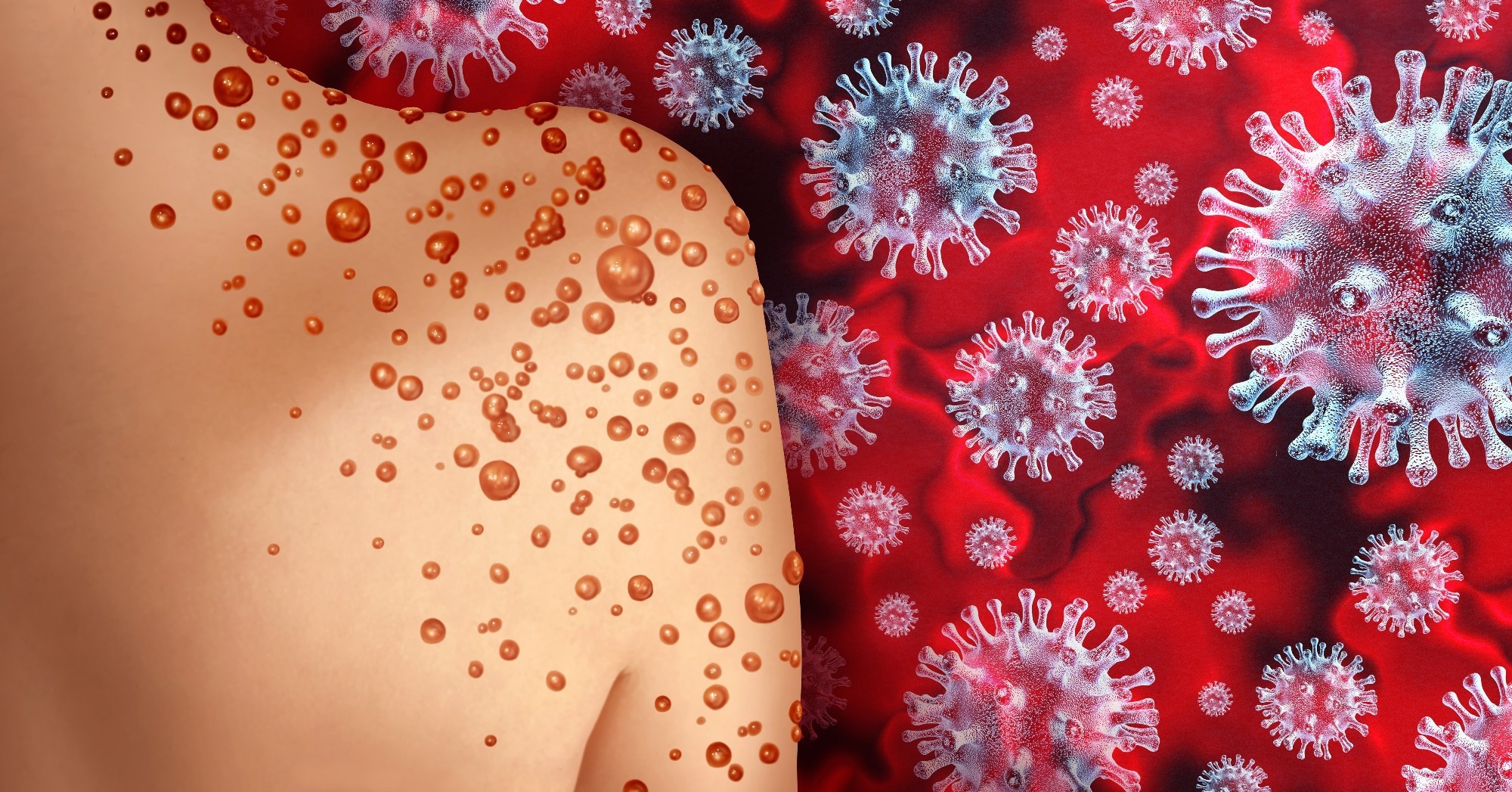In a recent study published in the Microorganisms journal, researchers reviewed the various aspects of human monkeypox infections.
 Study: Human Monkeypox: A Comprehensive Narrative Review and Analysis of the Public Health Implications. Image Credit: Lightspring/Shutterstock
Study: Human Monkeypox: A Comprehensive Narrative Review and Analysis of the Public Health Implications. Image Credit: Lightspring/Shutterstock
Several monkeypox cases reported in non-endemic countries in NorthAmerica, Europe, and Oceania have indicated the emergence of monkeypox as an urgent and unusual public health issue since the infection is not associated with animal or human travels. Particular attention should be given to this rising phenomenon because currently, over 70% of the world’s population is not vaccinated against smallpox. Smallpox vaccines have been reported to confer a considerable amount of protection against monkeypox. Hence, it is essential to optimize surveillance and preparedness in curbing and combating monkeypox infections.
Epidemiology of monkeypox
In the present study, researchers reviewed data related to epidemiology, clinical manifestations, management, diagnosis, and prevention of monkeypox (MPX) infections.
In 2003, an epidemic of 47 cases of monkeypox infections was recorded in the US due to human exposure to MPX-infected prairie dogs. Before that, MPX infections were reported in Africa, with a majority of recent infections having travel-related exposure to the virus in Nigeria. A study performed in the Democratic Republic of Congo revealed that MPX incidence was 0.64 per 100,000 persons in 2001, which increased to 2.82 per 100,000 persons in 2013. Another study showed that the average annual cumulative incidence of MPX infections between 2005 and 2007 was 0.55 per 100,000 in the Sankuru district.
A recent literature review estimated that the total case fatality ratio (CFR) across all countries was 8.7%. However, the team noted that all the mortalities recorded were in Africa. Furthermore, a study noted that the CFR In corresponding to the Central African clade was 10.6% while that of the West African clade was 3.7%.
Monkeypox multi-country outbreak
Almost 98% of the MPX cases reported since May 2022 have been detected in males who have sex with males (MSM). Notably, none of the infections have any direct travel connections to the endemic areas yet. Up to 5 July 2022, 5949 MPX cases were detected across Europe using International Health Regulations (IHR) mechanisms along with official public resources. Among these, 99 had the West African clade of MPX. Furthermore, 42% of the cases reported were detected among adults aged between 31 and 40 years and were male. Additionally, 96.1% of the cases had a rash and 69% had systemic symptoms including exhaustion, fever, muscular discomfort, diarrhea, vomiting, sore throat, chills, or headache, while no mortalities were reported.
Pathophysiology of MPX infections
While the natural reservoir of MPX is yet to be ascertained, rats are the most probable suspect. A potential risk factor is the consumption of undercooked meat and animal products derived from infected animals. Studies have reported that MPX is not transmitted easily but can be transmitted via contact with either contaminated lesion materials or body fluids, directly or indirectly. Direct contact included exposure to respiratory secretions, fomites, or skin-to-skin contact with MPX cases. Interestingly, even being present in the patient’s room or within six feet of a patient without wearing an N95 facemask and eye protection during a treatment that might generate aerosols from oral secretions, resuspension of dried exudates or skin lesions could lead to indirect exposure. Transmission is also possible through the placenta, causing congenital MPX.
Studies showed that post-entry into the host body, the virus replicated at the site of inoculation, beginning with localization in mononuclear phagocytic cells. Subsequently, the virus is released into the bloodstream before being localized in the skin cells. After replication, the virus spreads throughout the local lymph nodes, leading to viremia within 10 to 14 days.
Prevention and Treatment
Vaccination with either first-generation vaccines such as Aventis Pasteur Smallpox Vaccine and Dryvax, second-generation vaccines such as ACAM2000, and third-generation vaccines such as LC16m8 and IMVAMUNE have been the first line of defense against infection with any orthopoxvirus. However, their widespread use is curbed due to the high number of adverse effects caused by live, attenuated virus immunization.
All the first- and second-generation vaccines involve a live, replication-competent virus. These vaccines work by producing a lesion at the administration site that generates the infectious virus. These vaccines are associated with an increased risk of adverse events, including autoinoculation to the rest of the parts of the body, inadvertent transmission to others, disseminated infection among immunosuppressed patients, and post-vaccine encephalitis.
While there are no approved treatments against MPX, a viral envelope protein called tecovirimat has been found to prevent the release of viral particles from infected cells, thus treating several poxvirus-related diseases. Recently, seven MPX-infected patients in the UK treated with Tecovirimat showed considerable profile efficacy.
Overall, the study summarized the current MPX scenario and highlighted that a better understanding of the virus will facilitate the development of diagnostic and preventative measures against monkeypox.
Journal reference:
- Di Gennaro, F.; Veronese, N.; Marotta, C.; Shin, J.I.; Koyanagi, A.; Silenzi, A.; Antunes, M.; Saracino, A.; Bavaro, D.F.; Soysal, P.; Segala, F.V.; Butler, L.; Milano, E.; Barbagallo, M.; Barnett, Y.; Parris, C.; Nicastri, E.; Pizzol, D.; Smith, L. (2022). Human Monkeypox: A Comprehensive Narrative Review and Analysis of the Public Health Implications. Microorganisms. doi: https://doi.org/10.3390/microorganisms10081633 https://www.mdpi.com/2076-2607/10/8/1633